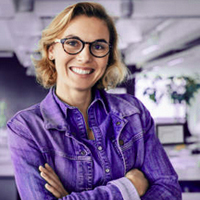A ‘Bubble Barrier’ Stops Plastic Debris Before It Enters The Ocean

“The Bubble Barrier” was created as a simple technique to prevent plastic waste from spilling into the ocean through streams. An air compressor pushes air through a porous tube that runs diagonally across the bottom of the canal, producing a stream of bubbles that collects garbage and directs it to a catchment system.
According to Philip Ehrhorn, co-founder and chief technical officer of The Great Bubble Barrier, the Dutch social company behind the system, it captures 86 percent of the rubbish that would otherwise flow into the River IJssel and then into the North Sea.
The Bubble Barrier, commissioned by the city of Amsterdam and the region’s water authority, was installed in less than five hours in October 2019.
Ehrhorn explains that the goal is to trap plastic without putting a physical barrier in the river, such as a net or boom, which might disturb aquatic life or impede transportation.
To reduce noise, the compressor is housed in a recycled shipping container 50 meters away from the barrier and is powered by Amsterdam’s renewable energy.
Ehrhorn claims that although the bubble curtain can trap polymers as small as 1 millimeter, the catchment system can only hold things 10 millimeters and greater. According to Ehrhorn, little floating aquatic life can become entangled in the bubble curtain’s current but can eventually pass through the catchment system.
Ehrhorn, who has a specialization in naval architecture and maritime engineering, came up with the Bubble Barrier while a semester abroad in Australia studying environmental engineering. He witnessed the utilization of oxygen bubbles to break down organic debris in a wastewater treatment plant.
“It was like a jacuzzi,” says Ehrhorn. “And what I noticed is that some of the plastic that people had flushed down the toilet was collecting in one corner.”
Ehrhorn had no knowledge that three Dutch ladies were working on the identical topic in Amsterdam. One evening, Anne Marieke Eveleens, Saskia Studer, and Francis Zoet were at a pub debating plastic waste when they saw the bubbles in their beer glasses and were inspired.
Ehrhorn’s acquaintance happened to see their proposal video for a competition seeking methods for reducing plastic from the environment.
“We connected and found that we have the same vision and mission,” remembers Ehrhorn. “So I handed in my thesis and moved to the Netherlands the next day.” Together, the four turned a simple idea into a fully-fledged Bubble Barrier pilot in Amsterdam’s River IJssel.
Borrelle has also examined the Bubble Barrier as a member of the Plastic Pollution Emissions Working Group, a group of self-described “scientists, policy wonks, and conservation practitioners.”
“It was a really interesting one for us to look at, mostly because other types of barriers placed into aquatic environments can be a bit problematic in the way they interact with ecological functioning and animals moving through that system,” she says.
“There are certain limitations,” she says. “The thing about plastic pollution is that there is no one single solution to fixing it.”

Glenda Bozeman – Business and Services
Glenda Bozeman writes Business articles for industries that want to see their Google search rankings surge. Her articles have appeared in a number of sites. Her articles focus on enlightening with informative Services sector needs. She holds the degree of Masters in Business and Marketing. Before she started writing, she experimented with various professions: computer programming, assistant marker, and others. But her favorite job is writing that she is now doing full-time.










